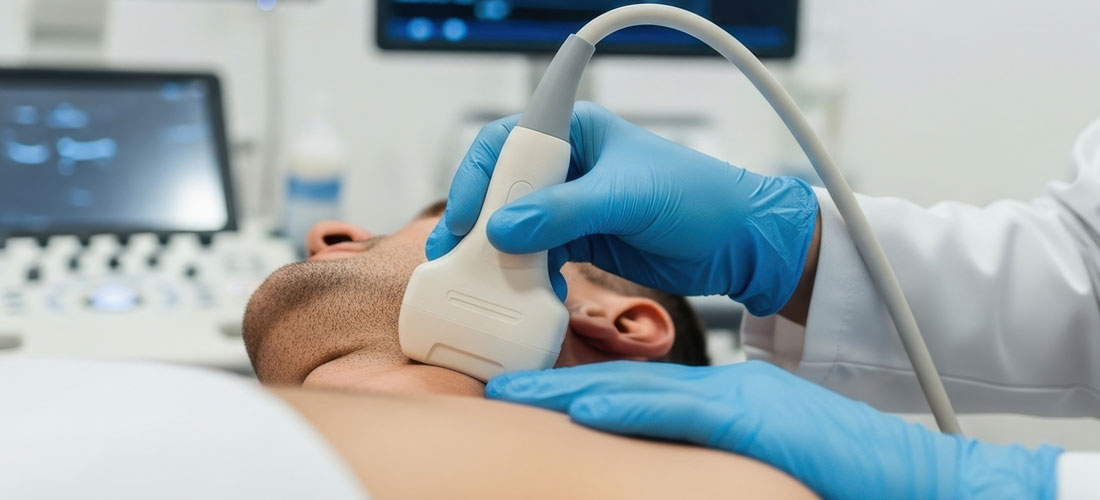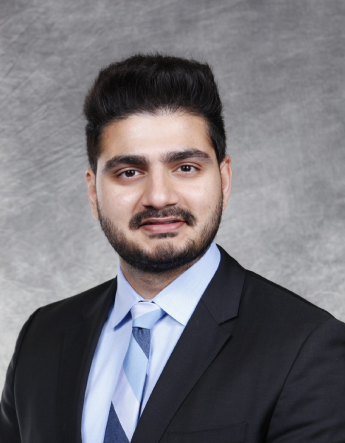Carotid Disease and TCAR: The Patient Journey

By now, you know the basics of carotid disease and the role of TCAR. Once the immediate decisions are behind you, the focus shifts toward living with the treatment, understanding your recovery, and planning for the long term. This stage of the journey is often filled with practical questions, the kind that shape your day-to-day life.
Lifestyle Changes After TCAR
After TCAR, lifestyle adjustments help protect the stent and lower the risk of future events. These changes do not need to be drastic, but they should be sustainable. Most patients benefit from balanced meals with fewer processed foods and more fruits, vegetables, and lean proteins. The goal is to support healthy blood vessels and keep cholesterol under control. Moderate activity, such as regular walks or light exercise, helps circulation without putting strain on the stent. Some people find it easier to make gradual adjustments rather than aiming for a strict plan that is hard to sustain. What counts most is consistency over time.
Diet:
- Choose meals rich in vegetables, fruits, whole grains, and lean proteins.
- Limit processed foods high in salt and sugar.
- Reduce red meat and fried foods, which contribute to plaque buildup.
- Incorporate healthy fats like olive oil, nuts, and fish.
Activity:
- Begin with walking and light stretching once cleared by your doctor.
- Avoid heavy lifting in the first few weeks.
- Gradually increase exercise to at least 150 minutes of moderate activity per week.
- Focus on activities that support cardiovascular health without straining the neck.
Other habits:
- Stop smoking, as it accelerates plaque formation.
- Limit alcohol intake.
- Take prescribed medications exactly as directed.
These steps are easier to maintain when approached gradually. Small, consistent changes often last longer than restrictive plans.
How Carotid Strokes Differ From Other Types
Understanding stroke risk is another important point. Strokes are not all the same.
| Stroke Type | Main Cause | Common Features |
|---|---|---|
| Carotid Stroke | Narrowing or blockage in carotid artery | Sudden weakness, vision loss, speech issues |
| Cardioembolic Stroke | Blood clot from the heart (e.g., atrial fibrillation) | Rapid onset, often severe |
| Hemorrhagic Stroke | Ruptured brain vessel | Headache, vomiting, loss of consciousness |
Carotid strokes are caused by reduced or blocked blood flow in the carotid arteries, which supply the brain. This is different from strokes linked to clots in the heart or bleeding inside the brain. The symptoms can overlap: sudden weakness on one side, vision changes, or speech problems.
Carotid strokes can develop from artery narrowing that has silently progressed for years. Patients may have no symptoms until a significant blockage is present. TCAR directly addresses this risk. During the procedure, blood flow in the carotid artery is temporarily reversed, so that any loose plaque fragments move away from the brain rather than toward it.
Preparing for a TCAR Procedure
Preparation before TCAR is straightforward but requires careful attention. At the hospital, the care team explains each step, from anesthesia to the small incision above the collarbone. Planning ahead for transportation and support at home makes recovery smoother.
Preparation involves both medical testing and practical planning. Patients usually undergo:
- Imaging such as carotid ultrasound, CT angiography, or MRI to confirm the degree of narrowing.
- Blood tests to check clotting and kidney function.
- Medication review since adjustments to blood thinners or antiplatelets may be required.
The day before, patients are often instructed to avoid food and drink after midnight. On the day of the procedure, expect a small incision just above the collarbone where the stent will be placed. Planning for a ride home and a few days of rest helps recovery.
Recovery: Week by Week
The recovery process tends to be quicker than traditional surgery. Many patients leave the hospital the next day. In the first week, there may be some soreness around the incision, which usually improves with rest and simple pain relief. By the second week, energy levels often return to normal, and light activities like driving or short trips are reasonable if the doctor approves. By the end of the first month, most people feel fully back to their routine, though regular check-ins remain important.
Week 1:
- Possible soreness near the incision.
- Fatigue is common, but light walking helps circulation.
- Driving is usually postponed until cleared by the doctor.
Week 2:
- Most patients resume normal routines.
- Travel for short distances becomes reasonable.
- Exercise can increase gradually with guidance.
Week 3–4:
- Energy returns close to baseline.
- Patients often feel confident resuming work and social activities.
- Regular check-ins and ultrasound imaging confirm the stent is functioning well.
By the end of the first month, many feel fully recovered, though ongoing follow-up is essential.
Durability of TCAR Benefits
Patients often ask how long the benefits last. The stent used in TCAR is designed to remain in place permanently. With proper care, including medication and lifestyle changes, it can provide lasting protection against stroke. Follow-up imaging helps ensure the artery stays open and healthy. In some cases, re-narrowing can occur, but it is usually detected early through routine surveillance. For most, the durability of the procedure means a meaningful reduction in stroke risk over many years.
Follow-up care includes:
- Regular ultrasound scans to monitor blood flow and detect early signs of re-narrowing.
- Continued antiplatelet therapy to keep the stent open.
- Ongoing evaluation of blood pressure and cholesterol.
Re-narrowing (restenosis):
- Can occur in some cases, often detected early through routine imaging.
- Usually treatable with repeat intervention if necessary.
In most patients, TCAR provides lasting stroke protection and significantly lowers the risk of future events.
What Happens If I Leave Carotid Disease Untreated?
Carotid disease develops when plaque narrows the arteries that carry blood to the brain. In its early stages, it may cause no obvious symptoms. Many patients only learn of it during a routine check or after an unrelated scan. This silence can be deceptive.
As narrowing progresses, the risk of stroke rises. A plaque that remains stable may not cause immediate problems, but unstable plaque can rupture, releasing small fragments that travel to the brain. Some people experience transient ischemic attacks, or “mini-strokes,” with temporary vision loss, weakness, or slurred speech. These episodes are warnings.
The timeline varies from person to person. In some, the disease advances slowly over years. In others, plaque changes quickly and leads to a major stroke without much warning. The danger of leaving it untreated is the unpredictability. Stroke remains one of the leading causes of disability and death, and carotid disease is a major contributor.
How Do Doctors Monitor Carotid Artery Health Over Time?
Once carotid disease is diagnosed, regular surveillance becomes part of care. The most common tool is carotid duplex ultrasound. This noninvasive test uses sound waves to measure blood flow and visualize plaque inside the artery.
Doctors look at several factors:
- Degree of stenosis: the percentage of narrowing in the artery.
- Plaque characteristics: whether the plaque is soft or calcified, smooth or irregular. Softer plaques tend to carry higher stroke risk.
- Flow velocity: how fast the blood is moving through the narrowed segment. Faster flow often signals tighter narrowing.
If the narrowing is mild, monitoring may be recommended every year or two. With moderate disease, ultrasounds are often scheduled more frequently. The goal is to track whether the artery is stable or progressing toward the point where intervention is safer than waiting.
Why RIVEA Vascular Institute for TCAR
At RIVEA Vascular Institute, your TCAR procedure is performed under the leadership of Dr. Karthik Mikkineni, a former Stanford faculty member and American board-certified vascular surgeon with extensive experience in advanced carotid interventions. As a national proctor for TCAR and the first to perform the procedure in India, Dr. Mikkineni combines global expertise with hands-on skill that few centers can match.
RIVEA is one of the few institutions in India offering TCAR. We are also the country’s first dedicated vascular and interventional radiology center, designed to deliver U.S.-standard care in every aspect of treatment. From your first consultation through recovery, our focus is on precision, safety, and long-term outcomes.
What sets us apart:
- U.S.-Standard Care: Led by Dr. Mikkineni, who brings international training, academic leadership, and American board certification.
- Proven Expertise: Over 100 TCAR procedures performed, including India’s first, with outcomes that reflect global best practices.
- Advanced Hybrid OR: Powered by GE Healthcare’s most advanced imaging system, enabling precise navigation and enhanced safety during complex interventions.
Choosing RIVEA means choosing a center built specifically for vascular health, led by a surgeon with unmatched TCAR experience, and equipped with technology that ensures the highest standard of care available today.
Our Team
-

Dr. Karthik Mikkineni
MD, FACS, FSVS, RPVI
Dr. Karthik Mikkineni is an internationally recognized vascular and endovascular surgeon, known for his pioneering work in complex aortic interventions, limb salvage, and carotid disease management.
View Profile Book an Appointment